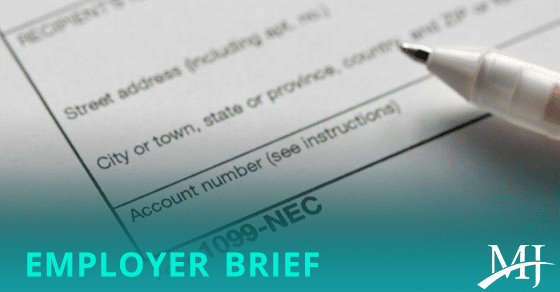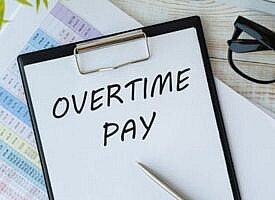Employers, stay mindful of your nonemployee reporting obligations
As an employer, you’re no doubt well aware of your responsibility to withhold employment taxes — such as Social Security, Medicare and income taxes — from employees’ compensation. And, of course, you need to report that compensation and the tax dollars withheld to the IRS.
But, in today’s “gig economy,” your organization may have a few or perhaps many workers who are independent contractors rather than employees. It’s important to consistently fulfill your reporting obligations for these individuals as well.
Nonemployee compensation
Although an employer isn’t responsible for withholding employment taxes from nonemployee compensation, an organization that pays more than $600 to an independent contractor must report that compensation to the IRS.
Independent contractor payments are reported on Form 1099-NEC, “Nonemployee Compensation.” Generally, employers reporting contractor compensation must file Form 1099-NEC by January 31 of the year following the payment(s).
Note that January 31 is a hard deadline. Unlike other information returns, Form 1099-NEC isn’t subject to an automatic 30-day extension to file. An extension to file may be available under certain hardship conditions, but such an extension must be requested before the filing deadline. Form 8809, “Application for Extension of Time to File Information Returns,” is used for this request.
Backup withholding
In some situations, independent contractor compensation that’s reportable on Form 1099-NEC is subject to backup withholding. This requirement ensures that the IRS receives the tax due on certain nonwage income. Independent contractor compensation is subject to backup withholding if:
- A payee hasn’t provided the employer with a Taxpayer Identification Number (TIN), or
- The payee provided a TIN, but the IRS has notified the employer that the payee’s name doesn’t match the TIN.
A payee’s TIN is either a Social Security Number, an Employer Identification Number, an Individual Taxpayer Identification Number or an Adoption Taxpayer Identification Number. When backup withholding is required, the rate is generally 24%.
Once an employer has started taking backup withholding, only the payee can stop it by showing the IRS that all income has been reported and/or that any underreporting has been corrected. Payees may also be able to stop backup withholding by showing that it will cause them undue hardship. If the IRS determines that backup withholding should stop, the payee will receive a written certification to that effect.
Brush up on the rules
As of this writing, unemployment remains relatively low. So, your organization might be using alternative staffing strategies if it can’t fill its open positions. Be sure to follow the tax rules for reporting payments to any independent contractors that you engage. Our firm can answer questions and provide further assistance.
© 2022




